Golden Poison Dart Frogs
Poison frogs inhabit the forests of the New World tropics from Nicaragua to Peru and Brazil, and a few species are used by South American tribes to coat the tips of darts and arrows. Poison frogs, or dendrobatids, are small and range from 0.5 to 0.75 inch from snout to vent in the minute poison frogs to about 2.6 inches in the skunk frog.
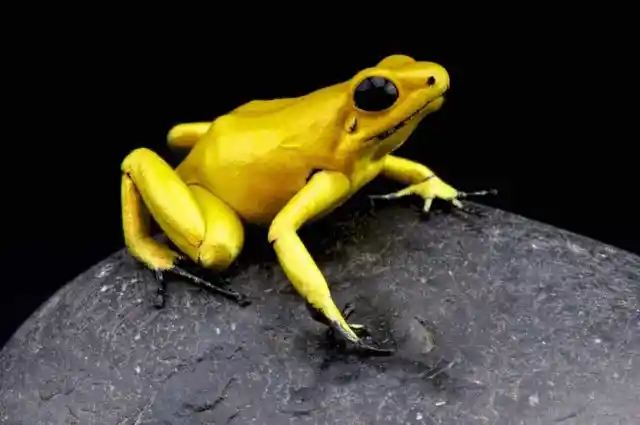
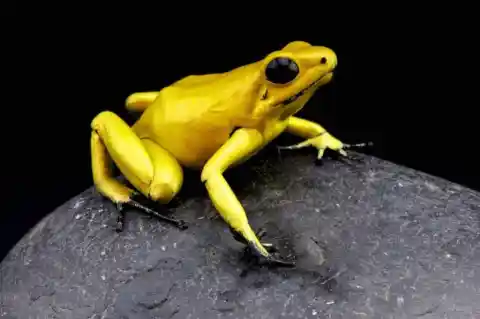
Aposematic or warning coloration is common among distasteful and poisonous species of many plants and animals. The coloration of poison frogs commonly includes reds, oranges, yellows, and even bright blues and greens on a black or dark background. Not all dendrobatids are so poisonous or brightly colored; many are patterned with shades of brown and well camouflaged, and their skin secretions are generally nontoxic and nonirritating.
Boomslangs
The Boomslang is an extremely dangerous, venomous snake species found in sub-Saharan Africa in the central and southern regions of the continent. The boomslang is most abundant in Botswana, Swaziland, Namibia, Mozambique, and Zimbabwe, but the species has been reported as far north as southern Chad and Nigeria, and as far east as eastern Guinea.
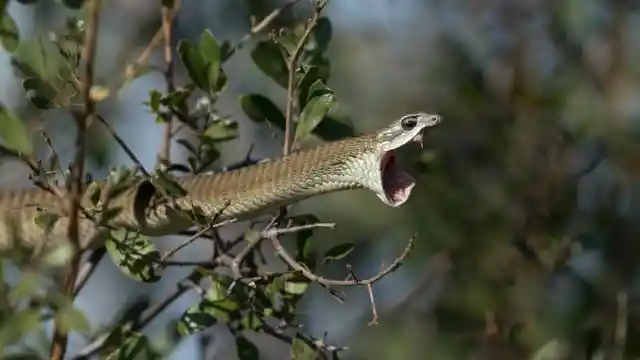

The Boomslang is a diurnal and almost exclusively arboreal snake, it is extremely agile and capable of climbing trees and gliding through the tree branches when hunting. During the colder weather, they will brumate for moderate periods inside the enclosed bird’s nests. Their coloring helps to camouflage these snakes in their arboreal habitats. Adult boomslangs will average between 4 and 6,5 feet in length and weigh anywhere from 175 g to 510 g.
Brazilian Wandering Spider
The Brazilian wandering spiders are sometimes also referred to as banana spiders because they are frequently found on banana leaves. They have an aggressive defense posture, in which they raise their front legs straight up into the air. Brazilian wandering spiders are poisonous to humans. Their venom is toxic to the nervous system, causing symptoms such as salivation, irregular heartbeat, and prolonged, painful erections in men.
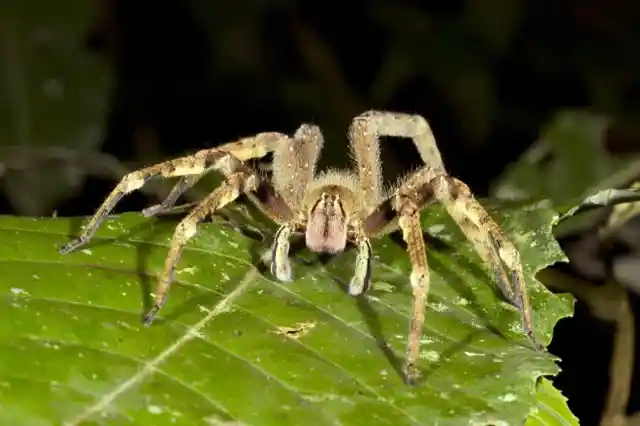

After a human is bitten by one of these spiders, he or she may experience initial symptoms such as severe burning pain at the site of the bite, sweating and goosebumps. Within 30 minutes, symptoms become systemic and include high or low blood pressure, fast or a slow heartbeat, nausea, abdominal cramping, hypothermia, vertigo, blurred vision, convulsions and excessive sweating associated with shock. People who are bitten by a Brazilian wandering spider should seek medical attention immediately.
Cobras
Cobras, with their threatening hoods and intimidating upright postures, are some of the most iconic snakes on Earth. Their elegance, prideful stance and venomous bite have made them both respected and feared. Cobras are Elapids, a type of poisonous snake with hollow fangs fixed to the top jaw at the front of the mouth. These snakes cannot hold their fangs down on prey so they inject venom through their fangs.
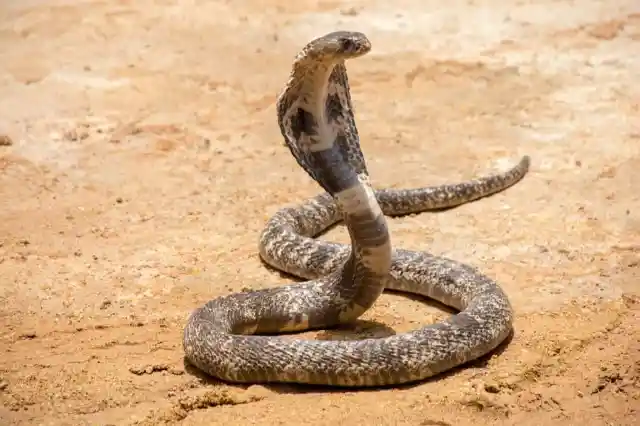
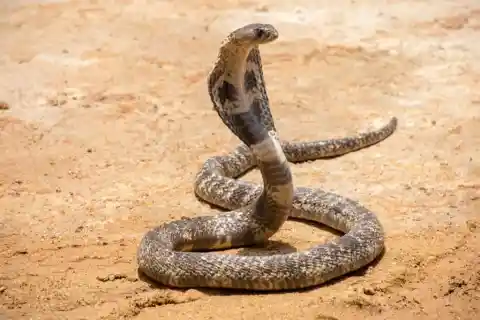
Cobras are large snakes, and many species reach more than 6 feet long. According to Cape Snake Conservation, the forest cobra is the largest true cobra, reaching 10 feet. The smallest species is the Mozambique spitting cobra, which is about 4 feet long. King Cobras, the longest of all venomous snakes, can reach 18 feet.
Africanized Honey Bees
The Africanized bee is a hybrid species of the Western honey bee. These so-called killer bees were established when bees from southern Africa and local Brazilian honey bees mated. The Africanized bee was first identified in Brazil in the 1950s, but it quickly spread through Central and South America after a handful of swarms escaped quarantine. Then, in 1990, the first permanent Africanized bee colonies arrived in Texas from Mexico.
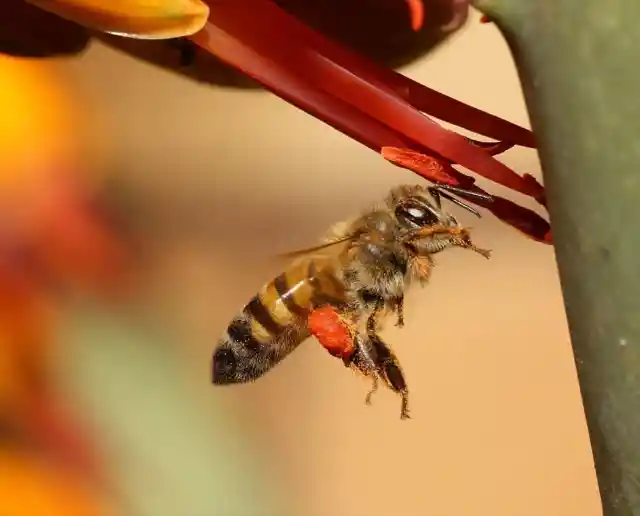
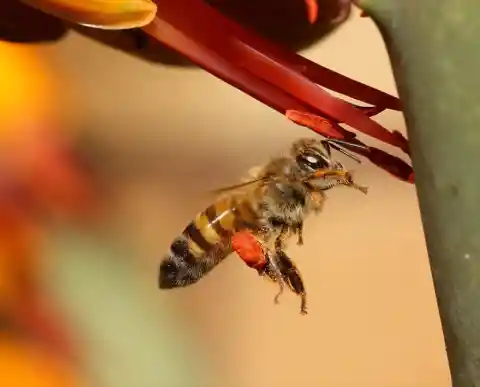
Because Africanized honeybees look so similar to European honeybees, contacting a licensed pest control professional is the best way to know if there is an infestation. Look for signs of nests in unexpected places. Be careful around holes in the ground, especially when mowing the lawn or otherwise maintaining property. If you live within 100 miles of an area where Africanized honeybees are common, it is not recommended to approach any nest.
Mountain Lions
Pumas, also called mountain lion, cougar, or panther, are large brownish New World cat comparable in size to the jaguar, the only other large cat of the Western Hemisphere. The puma, a member of the family Felidae, has the widest distribution of any New World mammal, with a range extending from southeastern Alaska to southern Argentina and Chile. Pumas live in a variety of habitats, including desert scrub, chaparral, swamps, and forests, but they avoid agricultural areas, flatlands, and other habitats lacking a cover.
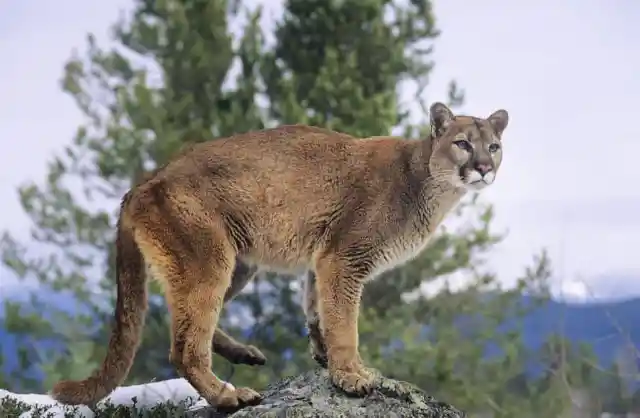
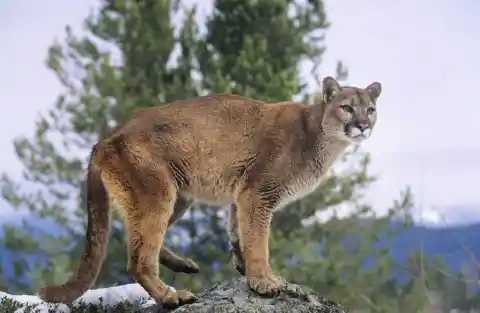
Mountain lions are solitary animals. They are very territorial and actively avoid other cats except during courtship. Their ranges can vary in size from 10 square miles to around 370 square miles, although females tend to have smaller ranges than males. Mountain lions are active hunters and may travel long distances in search of food. They hunt alone and attack from behind, breaking the neck of their prey by biting it at the base of the skull. After killing their prey, they will bury it and leave it, coming back to feed on it when hungry.
Grizzly Bears
Grizzlies are massive animals with humped shoulders and an elevated forehead that contributes to a somewhat concave profile. The fur is brownish to buff, and the hairs are usually silver- or pale-tipped to give the grizzled effect for which they are named. Large adult grizzlies may be about 8 feet long and weigh about 410 kg. The Kodiak bear is the largest living land carnivore and may attain a length of more than 3 meters and a weight of 780 kg.
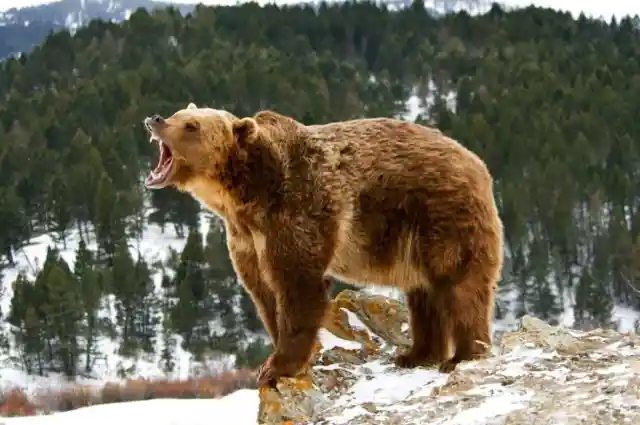

Omnivorous animals, grizzlies feed on berries, plant roots and shoots, small mammals, fish, calves of many hoofed animals, and carrion. Food is often cached in shallow holes, and grizzlies dig readily and vigorously in search of rodents. Each spring the bear marks the boundary of its territory by rubbing trees, scratching bark, or even biting large pieces from the trunks of trees.
Moose
Moose inhabit the northern parts of North America and Eurasia. In North America four subspecies are recognized, including the eastern moose, which inhabits eastern Canada and the northeastern United States; the northwestern moose, which inhabits central Canada and North Dakota, Minnesota, and northern Michigan; the Shiras moose, which inhabits the Rocky Mountains in the United States and Canada; and the Alaskan moose, which inhabits Alaska and northwestern Canada.
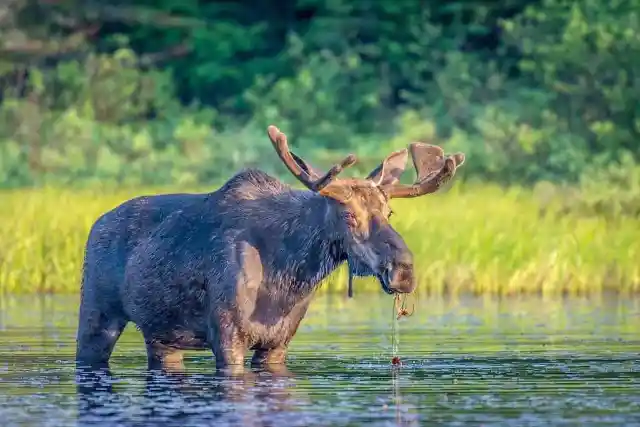
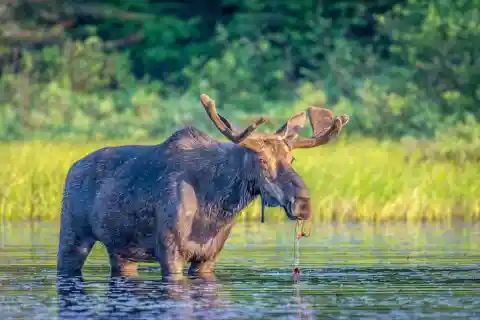
Moose are bold and readily defend themselves against large carnivores. During calving season, moose cows face grizzly and black bears. In late winter when the snow is deep and moose cannot flee, they defend themselves against wolf packs. They choose hard, level ground with little snow for maneuverability, such as ridges blown free of snow or frozen lakes with a thin cover of snow. When hindered by deep snow, they back into dense conifers to protect their vulnerable inguinal region and lower haunches from attacks by wolves.
Belcher Sea Snakes
The Belcher sea snake is the most poisonous sea species since its venom is 100 times more deadly than the most poisonous terrestrial species. Still, it is not dangerous for humans as they hardly bite and when it does, it doesn't release all their venom. This means that only one-quarter of all bitten humans will be poisoned. However, with just a few milligrams of this toxin, it would be enough to kill over 100 men.
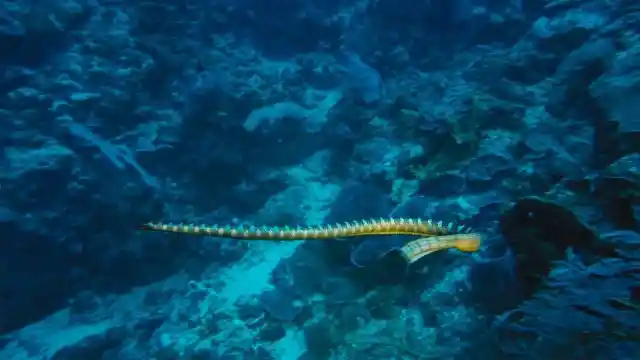
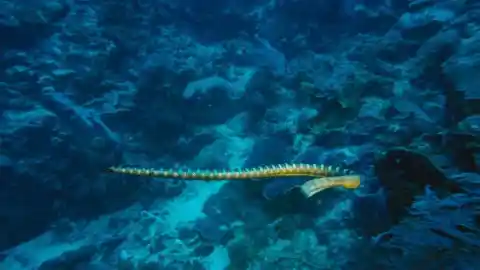
These snakes descended from land snakes of Australia and evolved to aquatic reptiles. The only difference between land snakes and sea snakes are small adaptations to the marine environment, as the end of its tail, which is more like the rest of the fish. Because of the fact that they are cold-blooded animals and need warm water and sun to maintain their body heat, they don't descend beyond 100 m underwater.
Cone Snails
Cones inject a paralyzing toxin by means of a dart; a few of the larger species have fatally stung humans. The usual preys are worms and mollusks, and a few cones capture fish. The various cone shell toxins are designed to interfere with a victim's nervous system and work by binding to specific cell surface receptors (glycoproteins) and ion channels.
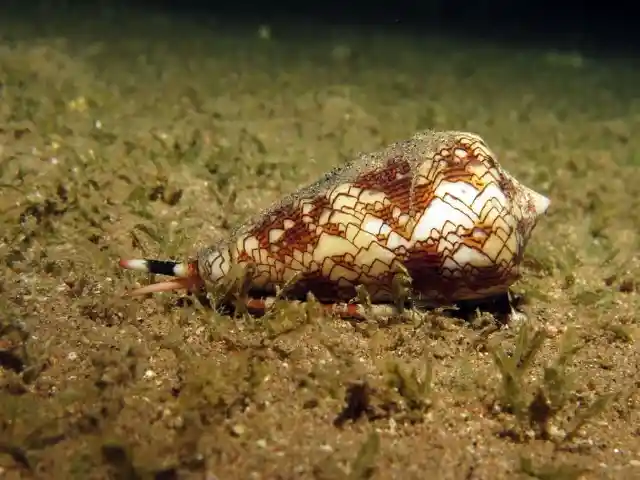
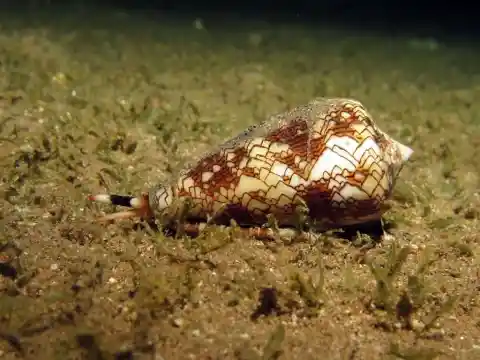
Most cone species occur in the Indo-Pacific region. Throughout most of the 19th and 20th centuries, it was known from fewer than 100 specimens, making it the most valuable shell in the world. In 1969 divers discovered the animal's habitat in the sandy seafloor near the Philippines and Indonesia. Hundreds of specimens have been collected since, and thus the shell's value has diminished significantly.
Blue-Ringed Octopuses
The blue-ringed octopus looks like an adorable little creature you may encounter in the sea, but if you ever do, swim away as fast as you can. These creatures are as dangerous as they are small. There are four species of this kind of octopus, and all of them are extremely venomous.


They are not aggressive by nature, however, but when they feel threatened, they attack. You can identify them by the blue rings that cover their bodies, and they are usually not larger than 8 inches. There is no antivenom available, so their victims almost always perish. Their venom paralyzes the target, who usually ends up drowning.
Hyenas
Hyenas are really cute animals, but are also extremely deadly. There's a reason why they were portrayed as evil in The Lion KIing, and that is because they are very cruel when it comes to their prey. They are not stronger than lions or tigers and other predators, but the way they catch their prey is truly awful.
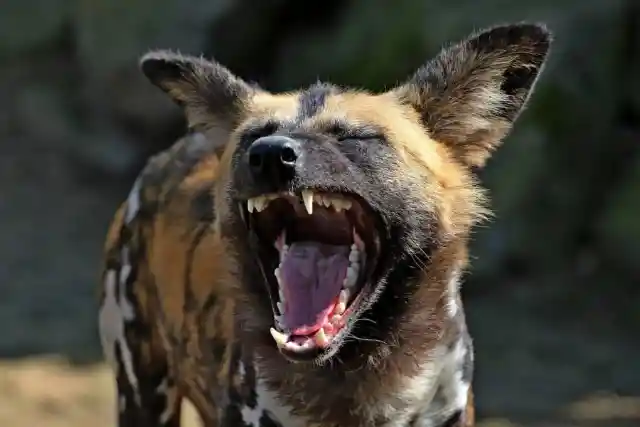
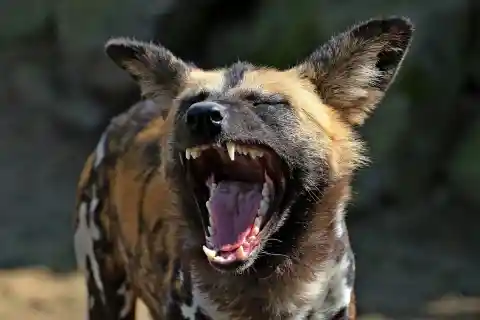
What hyenas do that makes them so terrifying is that they don't bother killing their prey before they start eating it. Therefore, when they catch something (or someone), they start feeding right away, regardless of whether the victim is still conscious and breathing. It can take hours before the poor creature finally dies.
Inland Taipans
Everybody knows that snakes are, for the most part, dangerous, but some are deadlier than others. What makes the inland taipan stand out from the rest of the snake world is how small and dangerous it is. The worst thing about them is that they are very small and, therefore, usually confused with harmless snakes.

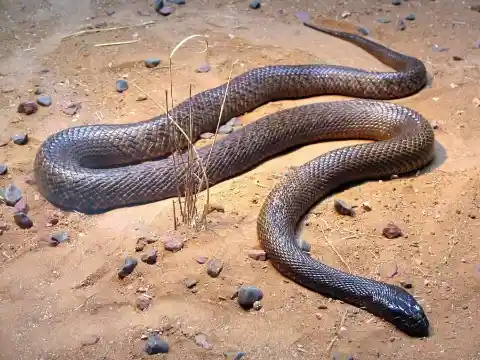
This little guy is actually the most venomous snake in the entire world. While there are many venomous snakes out there, this one is five times more dangerous than all other known species. There is a way to cure those who have been bitten, but there's a small window of just 30 minutes to get rid of the venom before the victim dies.
Bullet Ants
Ants are some of the strongest animals in the world. They can lift an impressive amount of weight in relation with their size, so it's best not to mess with them. One species of ant, the bullet ant, is particularly dangerous to be around of, and if you see one, don't even dare to bother it or you'll feel its wrath.
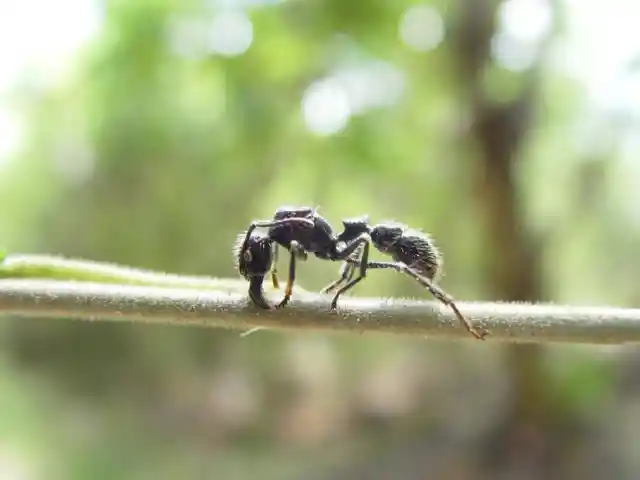
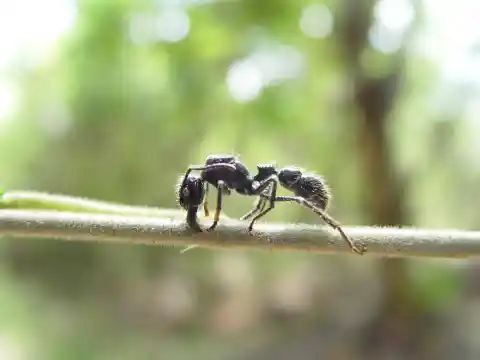
Bullet ants can't actually kill people, although it may feel that way. Their bite is actually the most painful insect bite in the world, and it literally feels like getting shot. The pain spreads through the body and can drive people insane. After about an hour, the pain goes away, although it stays in your memory forever.
Ascaris Roundworms
People are usually not very scared of worms as they seem to be pretty harmless creatures, but this one worm species in particular, the ascaris roundworm, should be pretty high on the "scary animal list". The worst thing about them is that they are pretty small (initially), and it people don't realize they've been infected by them before it's too late.
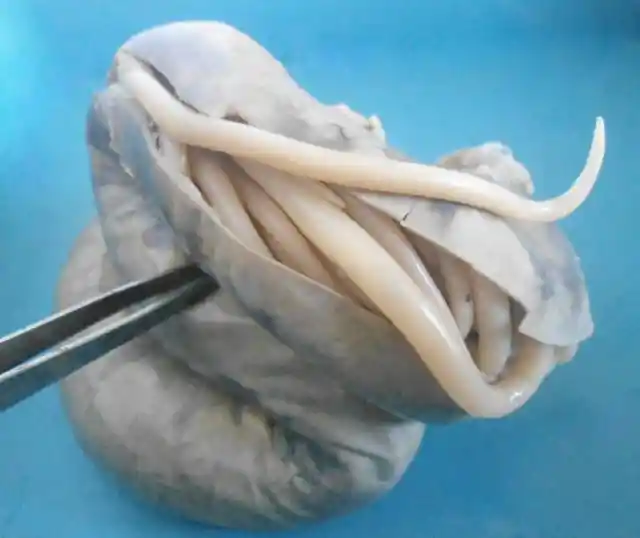
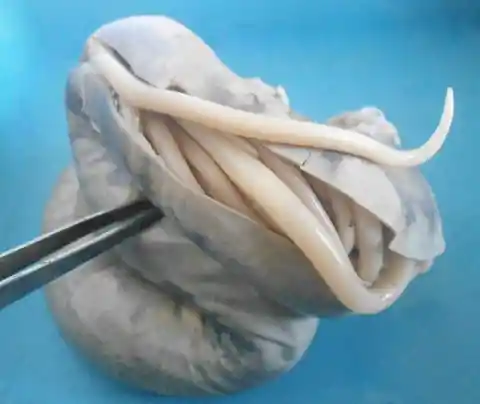
What these little deadly guys do is nest inside their victim and live in their stomach. They lay eggs inside of you and roam around like they own the place until they reach your lungs, at which point, you're done. Every year, around 4,500 people are killed by these awful creatures, and it is a really ugly way to go.
Mosquitoes
Mosquitos are, without a doubt, the most annoying animal in the world. What many people don't know, however, is that they are also the most deadly. In fact, they kill more people than any other creature in the world, and all they need to do is bite you.
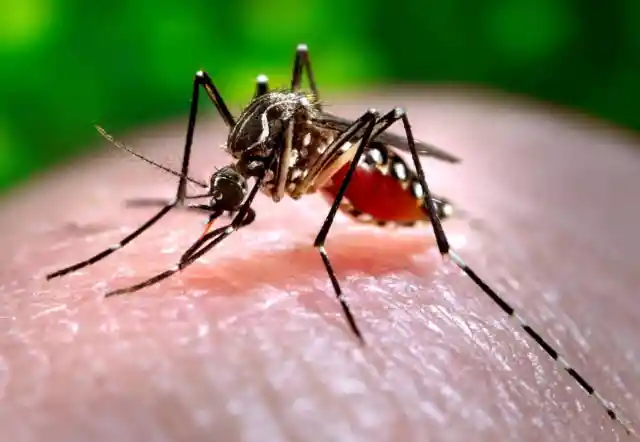
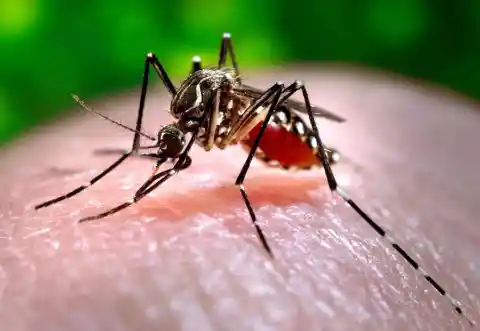
It is not that they are inherently deadly, as a mosquito bite only causes discomfort. However, they carry all sorts of diseases, such as Malaria, that they transmit through their bites, which then cause around 725,000 people to lose their lives each year.
Dogs
This is a hard pill to swallow, but dogs are amongst the deadliest animals in the world. They can be the sweetest, most loyal animals in the world, but they can also tear your face off if they want to. While cats are often portrayed as aggressive, there is no data of cats ever killing humans. However, there's plenty of cases of dogs killing people.


Dogs, especially rabid ones, kill approximately 25,000 people all over the world. Rabies is a huge problem in India, where 20,000 of those cases take place. Non-rabid dogs kill an estimated 50 people in the USA alone each year, and the number seems to be increasing for an unknown reason.
Saltwater Crocodiles
Saltwater crocodiles are the most dangerous kind of crocodile out there. While all crocodiles are very deadly and should never be messed with under any circumstances, the saltwater crocodile is especially big and especially aggressive.
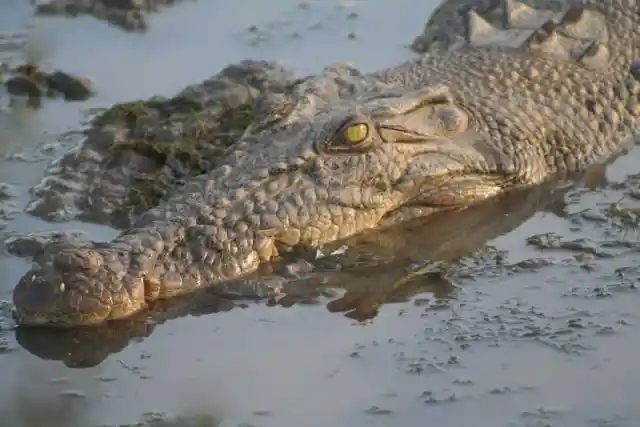

What makes this crocodile so scary is not only that it is the largest kind of crocodile, but that it kills anything that comes into its territory without a second thought. The creature instantly jumps on its victim and either drowns it or swallows it whole, not giving it a chance to escape its deadly claws.
Hippos
Hippos are very fun to look at when you're at the zoo, but if those who know how deadly these animals are know to stay away from them. If a hippo breaks out from its enclosure, run as fast as you can and don't look back. Hippos are known to cause around 500 deaths each year, either but running over people or biting them with their 20-inch-long teeth.

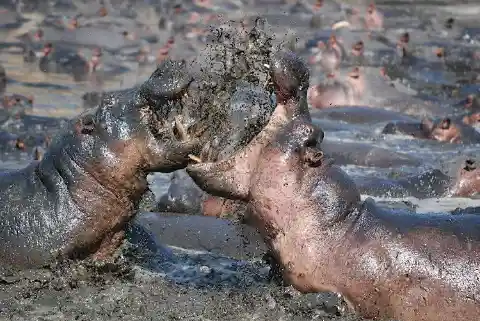
The worst thing about hippos is that they attack for absolutely no reason. People would be just minding their own business and a hippo would just kill them because it is bored. And if you think that these animals can't run fast, you'd be mistaken. Trying to outrun a hippo almost never works out, unfortunately.
Champawat Tiget
The Champawat tiger is not a species of tiger, but actually one single famous tiger in history. Bengal tigers are known to be extremely dangerous and people should always stay as far away from them as they can, but this one tiger in particular broke a record no other tiger did before.

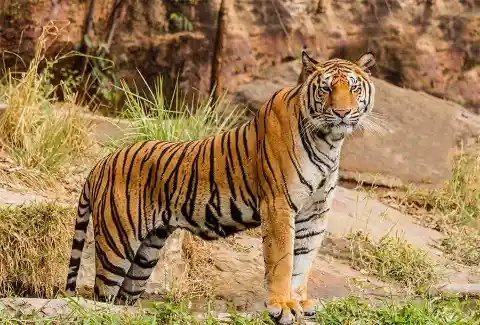
The Champawat tiger caught 436 people, dragged them to her hiding place, and killed them over the course of 20 years. It took people a while to realize what was going on, and when they discovered that all these deaths were caused by this single tiger, all they could do was shoot it so that it wouldn't hurt anyone ever again.
Great White Sharks
Great white sharks are many people's worst nightmares. This species of shark has a terrible reputation for being extremely deadly, and there have been countless movies made about them, painting them to be the bad guy. There's of course, some truth to it, as they are in fact deadly, but they are hardly the deadliest animals in the sea.
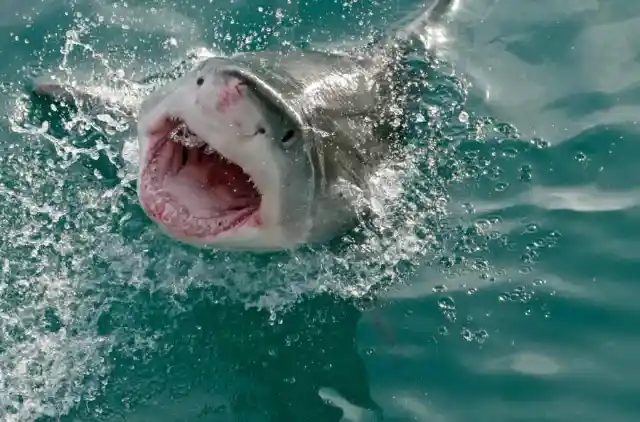
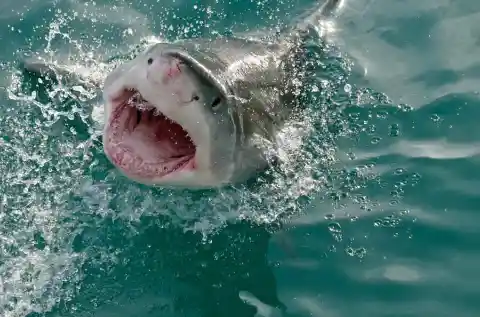
Great whites are huge, and they have some of the strongest teeth of any animal out there. Not many people have survived an attack by those humongous jaws, and if they have, they probably lost a limb or two. They don't usually attack humans without being provoked, but it is best to steer clear from them.
Elephants
Elephants are some of the most beloved animals in the world. They are beautiful, adorable creatures and are amongst the smartest creatures to ever live. The fact that they are smart, however, is not so good for the humans around them. Much like people do, elephants hold grudges, and if there's a human they don't like, they'll make sure to get their revenge.
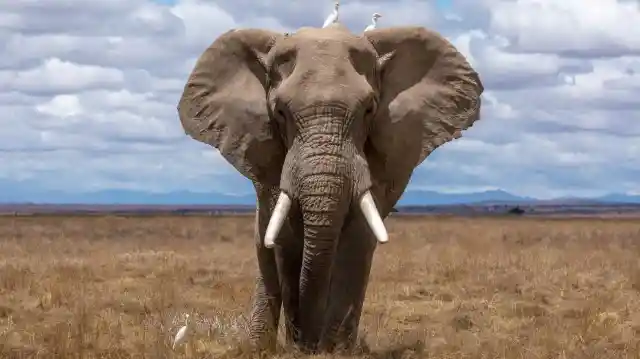
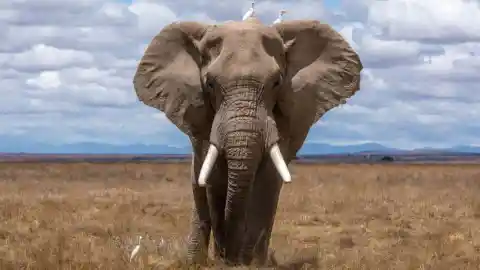
The thing is, you don't want an elephant to be your enemy. They are huge and if they want to, they can crush you. It is a well-known fact that elephants are the most dangerous animals at the zoo, believe it or not. If there's a zookeeper that is not friendly to them, they may push them to the floor and crush their heads.
Rhinos
Rhinos are pretty scary, and they have more than enough reason to want to kill humans. After all, they are one of the most endangered species at the moment, given that many poachers kill them to sell their horns in the black market. Therefore, they absolutely hate us and don't trust humans one bit.
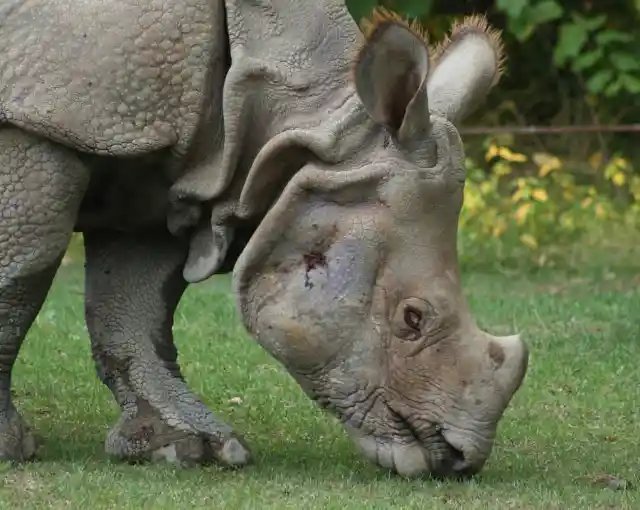
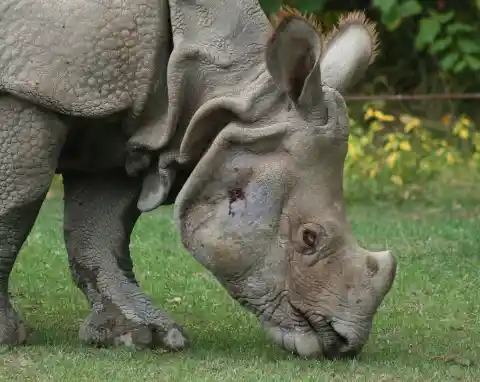
The worst thing you can do is provoke a rhino, especially if it's around their children. If they feel threatened, they charge at around 35 miles per hour and don't stop until their sharp three-foot-horn is stuck deep inside their target. You can try to outrun them, but you'll probably not make it.
Stone Fish
The stone fish is not a very nice fish to look at, and people would normally not be tempted to mess with it, and that would be wise, given that this is one of the most dangerous sea creatures in the world. In fact, you should be more scared of spotting one of these during your holidays instead of a great white shark.
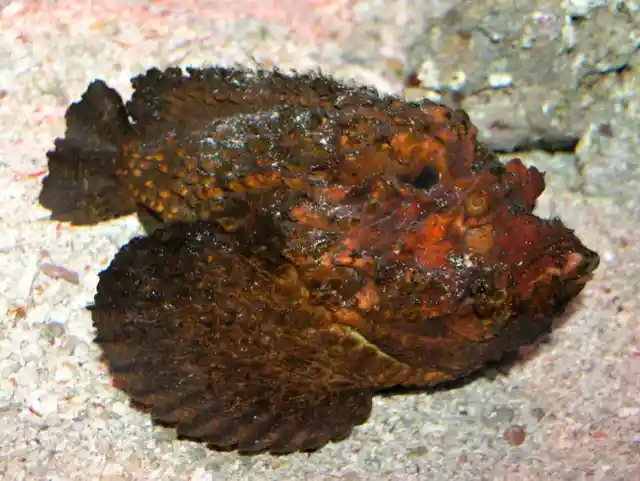

In fact, this is the most venomous fish known to man. There are four kinds of stone fish, and the deadliest one is the one found in the Red Sea and the Indo-Pacific. If their extremely painful sting is not treated quickly enough, their victim can lose their life. Not to mention, their sting hurts a lot.
Cassowary
The cassowary is a gorgeous, fluffy bird. Its face is a deep blue color, and it has beautiful black feathers covering its body. However, the cassowary is also known as the deadliest bird in the animal kingdom. It can't fly, but it sure can run, and if it's running after you, there's not much you can do about it.
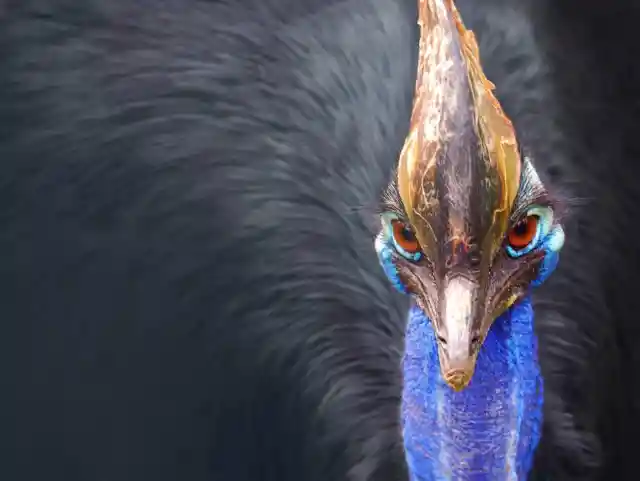
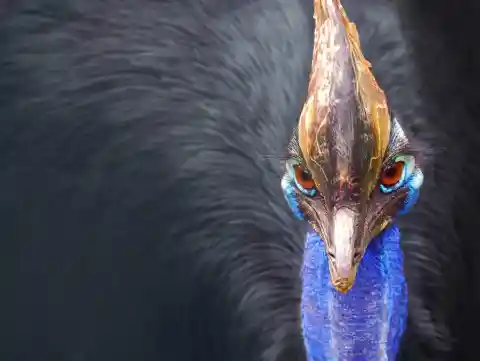
It is one of the biggest bids in the world, and it has enough strength to break a human in half. They usually don't attack without a reason, so the best thing to do is not to disturb them. They attack with their legs, kicking their target until they lose their life. Your best bet if this happens is to play dead and hope it goes away.
Deer
Deer are native to all continents except Australia and Antarctica, and many species have been widely introduced beyond their original habitats as game animals. One species, the reindeer (also known as the caribou), has been domesticated. Some swamp and island species are endangered, but most continental species are flourishing under protection and good management.
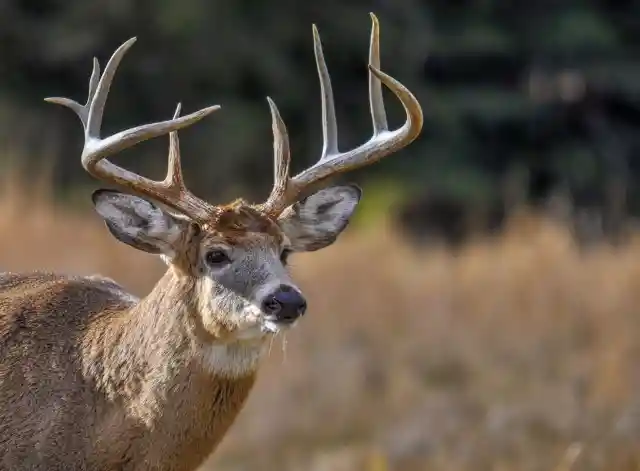

Although a number of different factors can be dangerous to people, probably the most important thing is the size of deer will often leave humans as the smaller being, and there are only a few animals that will be larger than people. However, if their young are threatened they can charge and kick anyone that they see as a threat, and this is something that has happened a number of times in areas where deer are living in public parkland and are more familiar with people.
Prairie Rattlesnakes
Rattlesnakes are found from southern Canada to central Argentina but are most abundant and diverse in the deserts of the southwestern United States and northern Mexico. Adults usually vary in length from 1.6 to 6.6 feet, but some can grow to 8.2 feet. A few species are marked with transverse bands, but most rattlesnakes are blotched with dark diamonds, hexagons, or rhombuses on a lighter background, usually gray or light brown
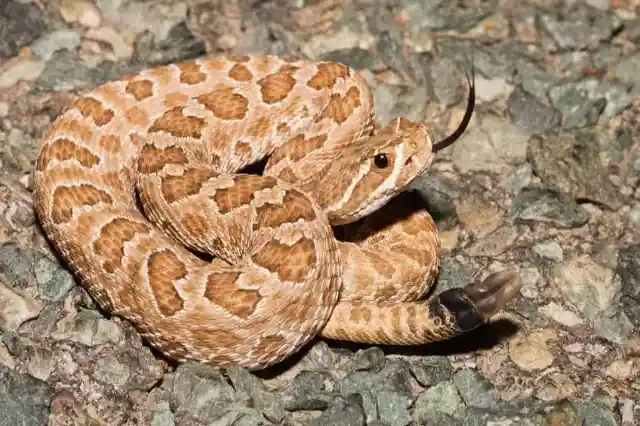
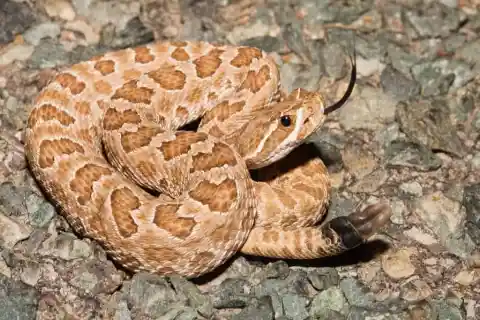
Rattlesnakes are not aggressive and will not attack humans if unprovoked; in fact, they are quite shy and timid. However, they are venomous and can be dangerous if molested or handled. The South American rattlesnake has the largest distribution of any rattlesnake; it ranges from Mexico to Argentina and is the only rattlesnake found throughout Central and South America. Also to be noted is that their venom attacks the nervous system more strongly than that of other rattlesnakes.
Bald Eagles
The bald eagle is actually a sea eagle that commonly occurs inland along rivers and large lakes. The adult male is about 36 inches long and has a wingspan of 6.6 feet. Females, which grow somewhat larger than males, may reach 43 inches in length and have a wingspan of 8 feet. Both sexes are dark brown, with a white head and tail. The bird is not actually bald; its name derives from the conspicuous appearance of its white-feathered head. The beak, eyes, and feet are yellow.
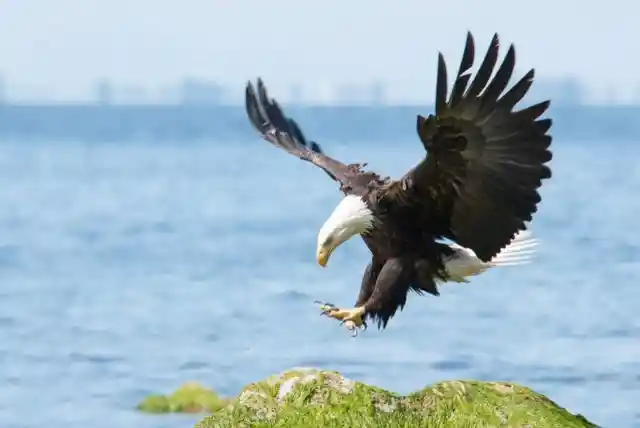
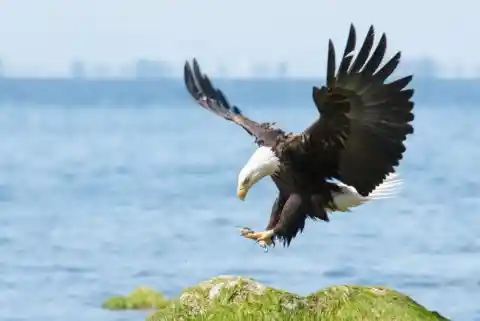
The species is an opportunistic forager that eats a variety of mammalian, avian, and reptilian prey, but generally prefers fish over other food types. It often scavenges prey items when available, pirates food from other species when it can, and captures its own prey only as a last resort. Bald eagles pluck fish out of the water with their talons, and sometimes they follow seabirds as a means of locating fish.
Red Foxes
Red foxes live around the world in many diverse habitats including forests, grasslands, mountains, and deserts. They also adapt well to human environments such as farms, suburban areas, and even large communities. The red fox's resourcefulness has earned it a legendary reputation for intelligence and cunning.
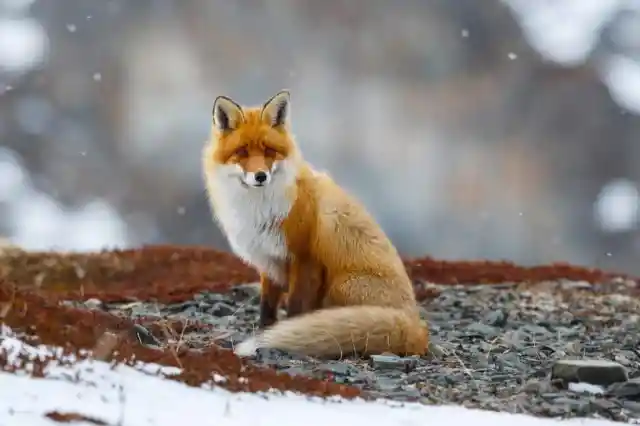
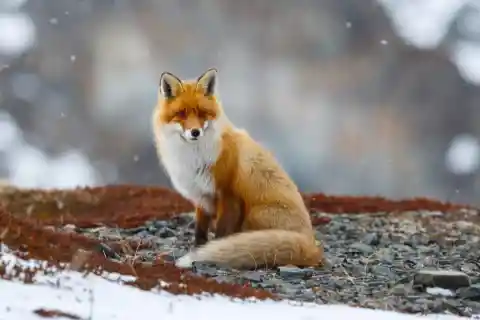
Red foxes are solitary hunters who feed on rodents, rabbits, birds, and other small game, but their diet can be as flexible as their home habitat. Foxes will eat fruit and vegetables, fish, frogs, and even worms. If living among humans, foxes will opportunistically dine on garbage and pet food. Like a cat's, the fox's thick tail aids its balance, but it has other uses as well. A fox uses its tail as a warm cover in cold weather and as a signal flag to communicate with other foxes.
Raccoons
A stout animal with short legs, a pointed muzzle, and small erect ears, the North American raccoon is 30 to 36 inches long, including the 10-inch tail. Weight is usually about 22 pounds or less, although large males may grow to more than 44 pounds. Those living in northern regions are larger than their southern counterparts. The North American raccoon’s fur is shaggy and coarse, and its color is iron-gray to blackish with brown overtones.
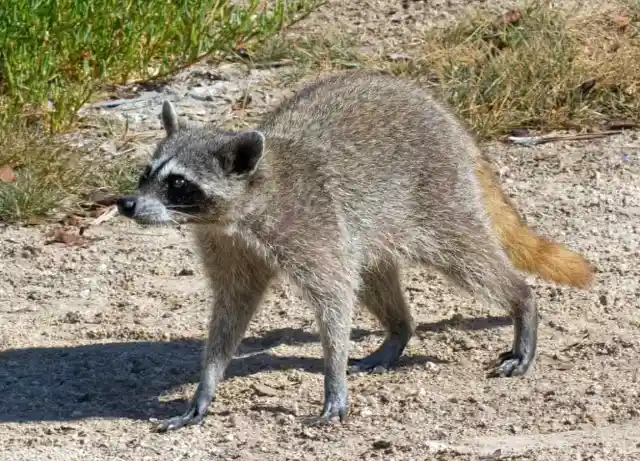
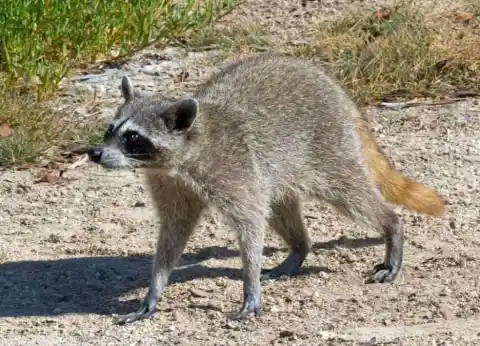
Raccoons adapt extremely well to human presence, even in towns and cities, where they den in buildings and thrive on a diet of garbage, pet food, and other items available to them. As the availability of food is the primary factor affecting the abundance of raccoons, the highest population densities are often found in large cities. In the wild raccoons live in a wide variety of forest and grassland habitats. Most often found in proximity to water, they are also proficient swimmers. They climb readily and usually den in riverbanks, hollow trees or logs, or abandoned beaver lodges.
Beavers
Beavers are the largest rodents in North America and Eurasia and the second largest rodents worldwide. Their bodies extend up to 31 inches long and generally weigh 35–66 pounds, with the heaviest recorded at more than 85 pounds. They live in streams, rivers, marshes, ponds, and shorelines of large lakes and construct dams of branches, stones, and mud, forming ponds that often cover many hectares. Ecologists often refer to beavers as “ecosystem engineers” because of their ability to alter the landscapes in which they live.

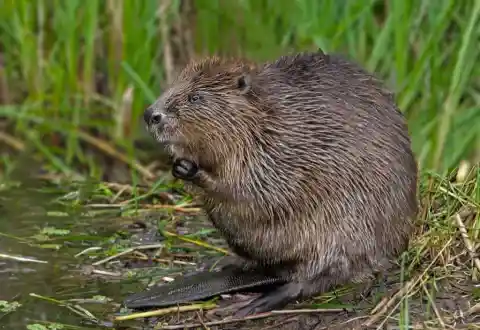
Beavers are colonial and primarily nocturnal. Their characteristically dome-shaped island lodges are built of branches plastered with mud. In marshes, lakes, and small rivers, beavers may instead construct bank lodges, and in large rivers and lakes, they excavate bank dens with an underwater entrance beneath tree roots or overhanging ledges.
White-Tailed Prairie Dogs
Prairie dogs have a short tail, small rounded ears, and short legs with long, strong claws. These rodents weigh up to 3.7 pounds, with a body between 11 to 13 inches long. The slightly flattened tail is 3 m 12 cm (1 foott 5 inches) long, and, depending on the species, its tip is black, white, or fringed with white around a gray center.
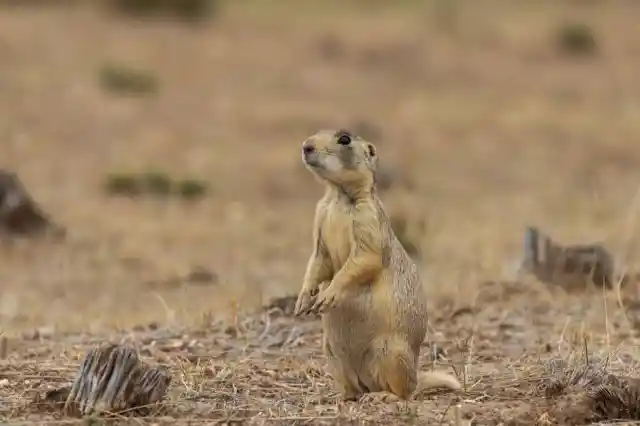
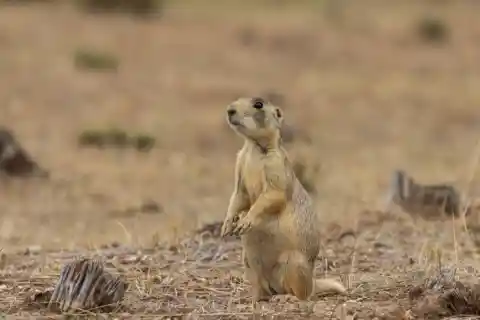
The black-tailed and Mexican prairie dogs do not hibernate and are periodically active during winter; they do not store food in their burrows. During winter when food is scarce, black-tails remain in their burrows for long periods without food or water, using physiological adaptations to control their metabolism. The other three species become torpid in October or November and emerge in March or April.
Swans
Swans are gracefully long-necked, heavy-bodied, big-footed birds that glide majestically when swimming and fly with slow wingbeats and with necks outstretched. They migrate in diagonal formation or V-formation at great heights, and no other waterfowl moves as fast on the water or in the air.
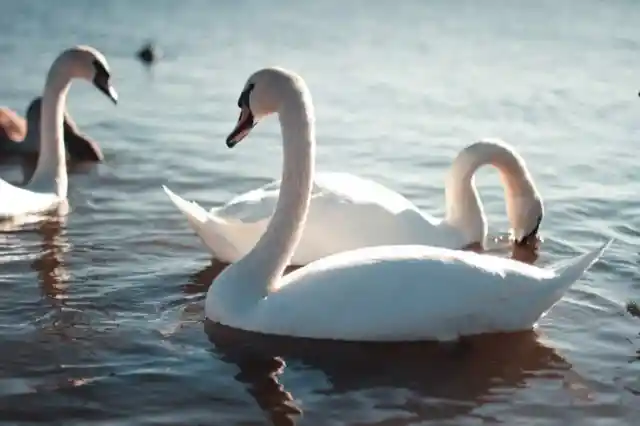
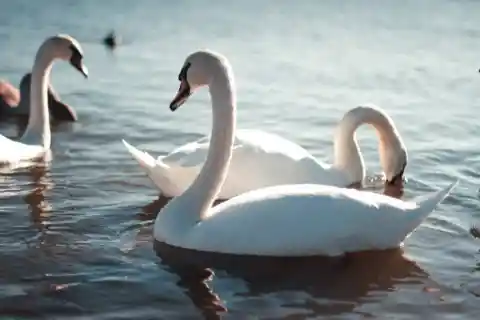
Once threatened with extinction (fewer than 100 birds were counted in the United States in 1935), the trumpeter swan has made a strong comeback in the national parks of the western United States and Canada, but the total population in the mid-1970s was only about 2,000. It is the largest swan, about 5.5 feet long, with a 10-foot wingspan, but it weighs less than the mute swan, which at 50 pounds is the heaviest flying bird.
Koalas
The koala is about 24 to 33 inches long and weighs up to 31 pounds. Virtually tailless, the body is stout and gray, with a pale yellow or cream-colored chest and mottling on the rump. The broad face has a wide, rounded, leathery nose, small yellow eyes, and big fluffy ears. The feet are strong and clawed; the two inner digits of the front feet and the innermost digit of the hind feet are opposable for grasping.
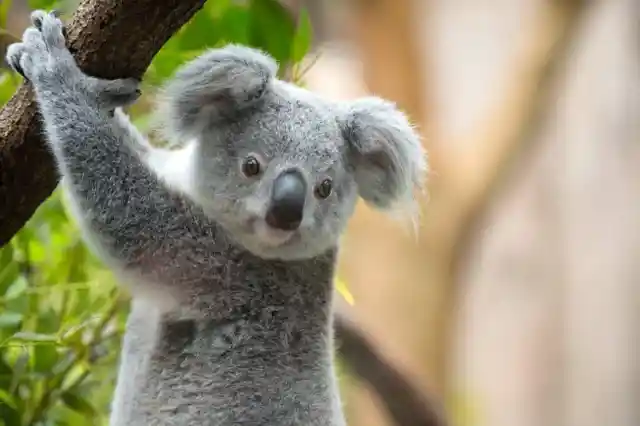
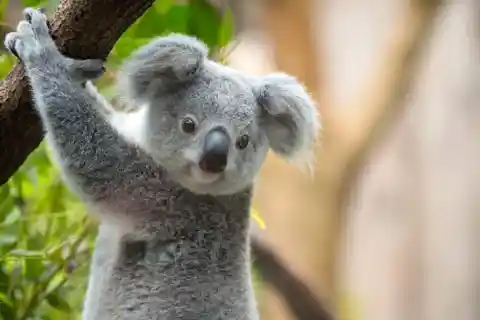
Formerly killed in huge numbers for their fur, especially during the 1920s and ’30s, koalas dwindled in number from several million to a few hundred thousand. In the southern part of their range, they became practically extinct except for a single population in Gippsland, Victoria. Some were translocated onto small offshore islands, especially Phillip Island, where they did so well that these koalas were used to restock much of the original range in Victoria and southern New South Wales.
Cape Buffalos
The Cape buffalo is the only member of the buffalo and cattle tribe that occurs naturally in Africa. The Cape buffalo is not very tall as it stands only 51–59 inches tall and has relatively short legs, but it is massive, weighing around 935–1,910 pounds. Bulls are about 220 pounds heavier than cows, and their horns are thicker and usually wider, up to 40 inches across, with a broad shield covering the forehead.
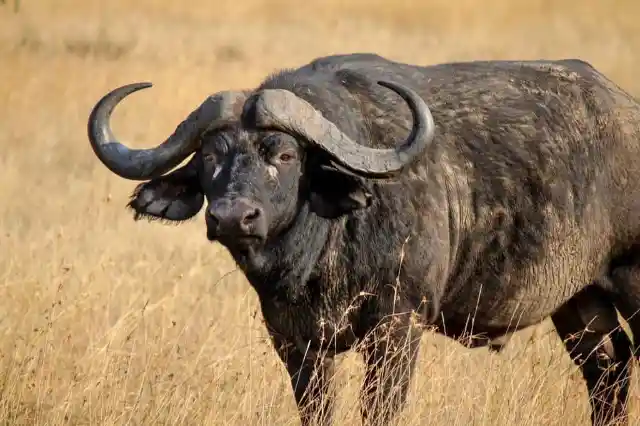
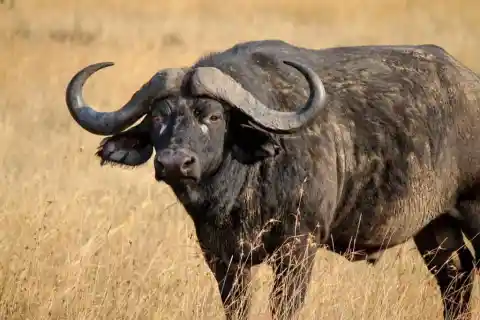
Their preferred habitat includes refuge from heat and danger in the form of woodland, thickets, or reeds, pastures with medium to tall grass (preferably but not necessarily green), and access to water, wallows, and mineral licks. The largest populations occur in well-watered savannas, notably on floodplains bordering major rivers and lakes, where herds of over 1,000 are not uncommon.
Giant Anteaters
The giant anteater, sometimes called the ant bear, is the largest member of the anteater family and is best known in the tropical grasslands of Venezuela, where it is still common. It was once found in the lowland forests of Central America and still lives in the Amazon basin southward to the grasslands of Paraguay and Argentina. Gray with a diagonal white-bordered black stripe on each shoulder, the giant anteater attains a length of about 6 feet, including the long bushy tail, and weighs up to 88 pounds.
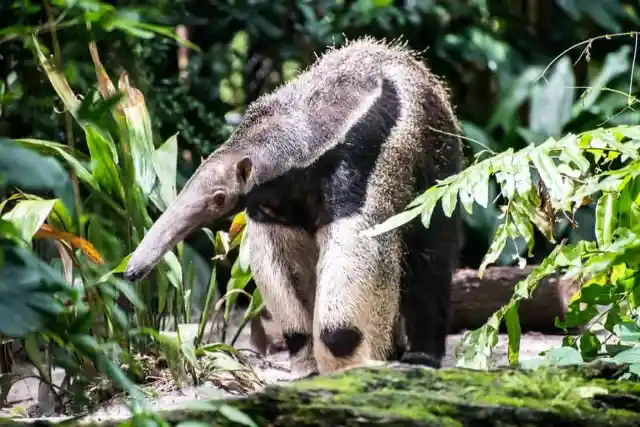

Females bear a single offspring after a gestation period of about 190 days. A young anteater looks identical, except in size, to an adult, and, from two or three weeks following birth until it is about a year old, it rides on its mother's back as she travels. The home ranges of individual anteaters living in the Llanos overlap and can cover more than 6,000 acres. The giant anteater is the longest-lived anteater; one in captivity reportedly survived 25 years.
Wild Boars
The wild boar, which is sometimes called the European wild boar, is the largest of the wild pigs and is native to forests ranging from western and northern Europe and North Africa to India, the Andaman Islands, and China. It has been introduced to New Zealand and to the United States, a country in which it mixed with native feral species). It is bristly haired, grizzled, blackish or brown in color, and stands up to 35 inches tall at the shoulder.
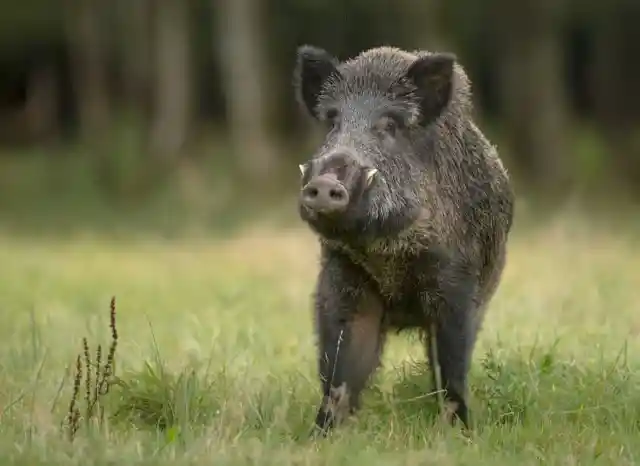

From earliest times, because of its great strength, speed, and ferocity, the wild boar has been one of the favorite beasts of the chase. In some parts of Europe and India, it is still hunted with dogs, but the spear has mostly been replaced with the gun. In Europe, the boar is one of the four heraldic beasts of the chase and was the distinguishing mark of Richard III, king of England. As an article of food, the boar's head was long considered a special delicacy.
Slow Loris
Lorises are arboreal and nocturnal, curling up to sleep by day. They have soft gray or brown fur and can be recognized by their huge eyes encircled by dark patches and by their short index fingers. They move with great deliberation through the trees and often hang by their feet, with their hands free to grasp food or branches. Lorises are related to the pottos and angwantibos of Africa; together they constitute the family Lorisidae
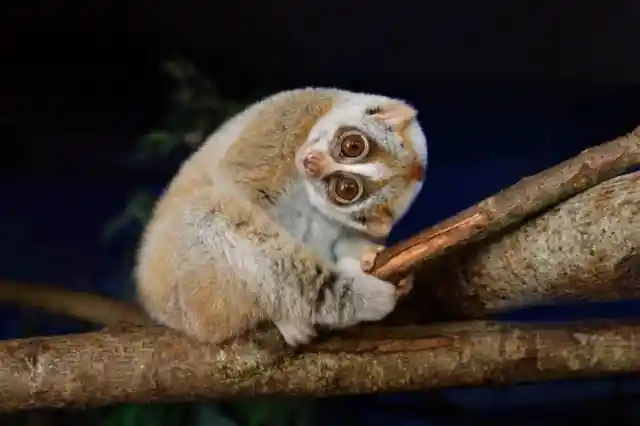
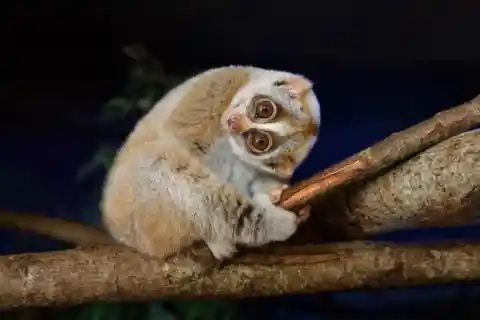
Lorises are often hunted for food, used in traditional medicines, or collected for the pet trade. Many species are vulnerable to environment loss as their living space is converted into agricultural or grazing land. According to the International Union for Conservation of Nature (IUCN), all species except the gray slender loris are considered threatened.